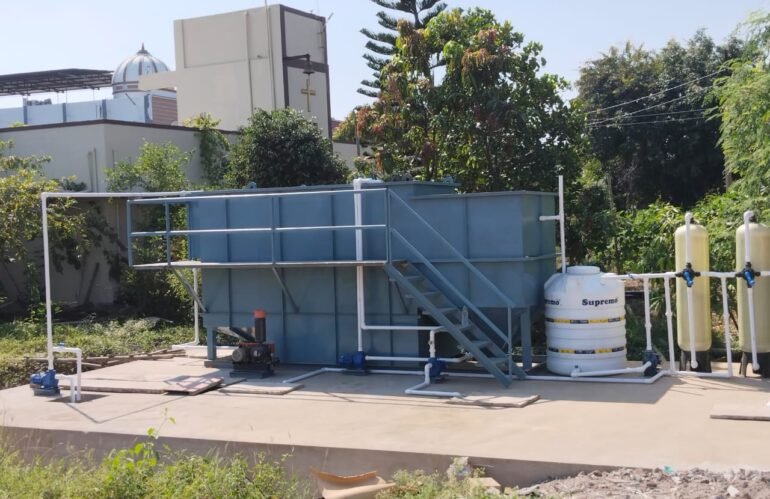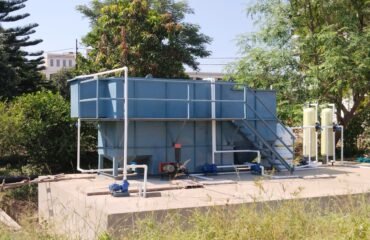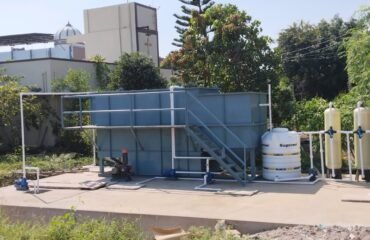Nestled in the pristine Western Ghats, Wayanad is a region of unparalleled natural beauty and ecological significance. Amidst this serenity, it is crucial to safeguard the environment and public health, and this responsibility falls on the Effluent Treatment Plant and the Sewage Treatment Plant. These facilities are the unsung heroes, silently working to ensure clean water sources and a healthier Wayanad. In this article, we will explore the functions and significance of these wastewater treatment plants in this picturesque region.
Introduction to Effluent Treatment Plant and Sewage Treatment Plant
Wayanad, with its lush forests, abundant rivers, and growing tourism, generates wastewater that needs responsible management. To address this issue, Wayanad relies on two essential systems: the Effluent Treatment Plant for industrial wastewater and the Sewage Treatment Plant for domestic sewage. These plants employ a combination of physical, chemical, and biological processes to purify water.
For example, the Effluent Treatment Plant uses methods such as coagulation, sedimentation, and biological treatments to eliminate pollutants and toxins from industrial wastewater. On the other hand, the Sewage Treatment Plant treats domestic sewage through processes like screening, aeration, and sludge treatment. The treated water from these plants can be safely returned to the environment, ensuring cleaner water sources and a healthier ecosystem.
The Significance of Effluent Treatment Plant in Wayanad
Wayanad’s growing agricultural and tourism sectors make the Effluent Treatment Plant vital for the region. Various activities generate significant volumes of wastewater. Without the Effluent Treatment Plant, this discharge could contaminate water bodies, affect aquatic life, and pose health risks to the public.
Effluent Treatment Plants ensure that industrial effluents meet stringent quality standards before they are discharged. Moreover, they play a crucial role in preserving the region’s aesthetics and cleanliness, crucial for both tourism and the well-being of its residents.
A Closer Look at Sewage Treatment Plant
Sewage treatment might not be the most glamorous topic, but it is an essential requirement for any urban or rural area. In Wayanad, the Sewage Treatment Plant is designed to manage wastewater from households, tourism establishments, and institutions.
The Sewage Treatment Plant functions by separating solids from liquids, breaking down organic matter, and disinfecting the water before it is released. Without Sewage Treatment Plants, untreated sewage could pose severe health risks and lead to environmental problems.
Why Wayanad Needs the Sewage Treatment Plant
The need for Sewage Treatment Plants in Wayanad becomes evident as the region experiences growth in tourism and population. A continually expanding region must efficiently manage its waste to prevent contamination and public health crises. Sewage Treatment Plants not only safeguard public health but also protect the environment.
Comparing Effluent Treatment Plant and Sewage Treatment Plant
Both the Effluent Treatment Plant and the Sewage Treatment Plant serve distinct purposes but share a common objective: environmental protection. While the Effluent Treatment Plant focuses on industrial wastewater, the Sewage Treatment Plant handles domestic sewage. The key difference lies in the sources of wastewater they manage.
Effluent Treatment Plants act as guardians of environmental hygiene, ensuring that various activities do not harm the natural splendor of Wayanad. On the other hand, Sewage Treatment Plants silently ensure that sewage from homes and tourism establishments does not become a health hazard.
Sustainable Practices in Wastewater Treatment
The significance of the Effluent Treatment Plant and the Sewage Treatment Plant in Wayanad extends beyond wastewater purification. These treatment plants are advocates of sustainability and continuously evolve to incorporate eco-friendly practices and reduce their environmental footprint.
Some Effluent Treatment Plants and Sewage Treatment Plants in Wayanad are adopting green technologies like solar power, rainwater harvesting, and energy-efficient processes. These not only lower operational costs but also set an example for other regions to follow.
ETP and STP’s Role in Environmental Conservation
Preserving Wayanad’s natural beauty and environment depends on recognizing the crucial role of the Effluent Treatment Plant and the Sewage Treatment Plant. These plants effectively prevent contamination of rivers, lakes, and streams by treating wastewater. In turn, this safeguards the habitat of aquatic species and sustains the pristine landscapes of Wayanad.
The Economic Benefits of Effluent Treatment Plant and Sewage Treatment Plant
One might wonder about the costs associated with maintaining and operating these plants. However, the Effluent Treatment Plant and the Sewage Treatment Plant in Wayanad offer substantial economic benefits. Industries and tourism establishments, by complying with environmental regulations through efficient wastewater treatment, not only fulfill legal requirements but also enhance their reputation and operational efficiency. This contributes to economic growth in the region.
The Sewage Treatment Plant, apart from safeguarding public health, also creates job opportunities and supports the local economy. Over time, investing in wastewater treatment plants proves to be financially rewarding for Wayanad.
Best Practices for Maintaining the Effluent Treatment Plant and Sewage Treatment Plant
Like any system, the Effluent Treatment Plant and the Sewage Treatment Plant require regular maintenance to function effectively. Regular inspections, timely repairs, and adherence to safety protocols are essential. These plants should also keep abreast of the latest advancements in wastewater treatment to ensure efficiency and compliance with environmental regulations.
The Future of Wastewater Treatment in Wayanad
As Wayanad continues to grow and attract more visitors, the demand for effective wastewater treatment will only increase. The future holds the promise of more advanced and eco-friendly technologies in Effluent Treatment Plants and Sewage Treatment Plants. It is a collective responsibility to stay informed, support sustainable practices, and ensure that this ecologically precious region remains clean, vibrant, and harmonious with nature.
Conclusion
In conclusion, the Effluent Treatment Plant and the Sewage Treatment Plant are the silent protectors of Wayanad’s pristine environment and public health. These wastewater treatment plants, although often overlooked, play a critical role in preserving the natural splendor of this ecologically rich region. Let’s acknowledge and appreciate their significance and commit to supporting their continuous improvement.






